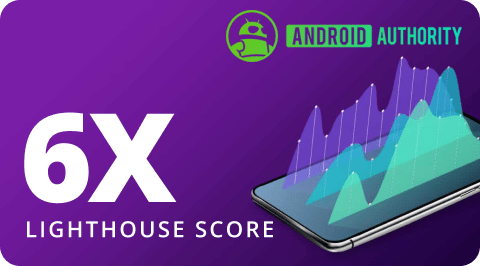
Understanding Digital Experience Platforms
In this increasingly digital age, the role of a digital experience platform has become essential for many businesses.
Implementing an effective digital experience platform isn’t solely about incorporating new tech advancements. It’s also about effectively captivating users across their chosen digital mediums. A digital experience platform should amalgamate speed, consistency, and protection, guaranteeing smooth digital communication that genuinely aligns with targeted audiences.
When implemented correctly, a digital experience platform should also help you expand beyond the web browser and into the real life of your customers, from mobile access through an app to personalization and anticipation across a wide range of channels. It includes customer-facing access as well as back-end digital processes that help your internal team create a better customer experience overall.
This quick guide will help you gain a better understanding of what a digital experience platform is and the various key elements you should look for in one. Here’s what we’ll cover:
Key Features of an Effective Digital Experience Platform
To achieve ultimate customer satisfaction and enhance their journey with personalized experiences, you require a robust digital experience platform (DXP). An effective DXP not only offers convenience to your customers but also ensures consistency, security, and personalized accessibility. Modern DXPs should possess the capability to support rapid load times – customers tend to abandon platforms that don’t load swiftly. As your business grows and changes, your DXP should demonstrate agility and seamlessly integrate and manage new technologies. However, the complexity of the platform should never compromise the user experience.
The more capable your DXP is of automation, the better the digital experience, saving your team time and effort. You need to be able to measure your successes and your failures and make changes based on that insight. Marketing and IT both need to be able to prove they’re improving the bottom line with every investment they make, and your DXP should do that for you.
At the same time, you need to offer security and trust to your customers, keeping their personal information and their privacy safe while still offering them experiences that matter to them. The DXP solution is simply a tool for better customer engagement. This is true for eCommerce companies especially, who need to show that they are keeping credit card details and personal preferences safe while still being able to offer customized shopping experiences based on purchase or search history.
Even if you don’t offer a physical product, the customer experience your company provides in the digital realm can affect custoemrs’ willingness to work with you again or trust you to perform a service.
How Do Digital Experience Platforms Affect Your Customers?
In order to select the perfect DXP technology, you need to understand your customer journey and design around it. If implemented correctly, a DXP will give your customers a reason to trust you. If they can access your company via whatever tool works best for them, you’ll make their lives easier, increase their loyalty to your business, and attract more customers thanks to their glowing recommendations. But if your methods don’t meet your customers’ needs where they are, as opposed to forcing them into an unfamiliar routine, the DXP will be more of a hindrance than a help.
At the same time, if your internal teams aren’t trained properly or aren’t ready to adopt the DXP’s methods, it will ultimately fail. The DXP needs to be part of a long-term roadmap, with your customers’ needs taken into account, and with your business goals and team’s capabilities in mind. Any frustration your customers experience due to the DXP—from getting the runaround in customer service to slow-loading pages—will cost you dearly, not only in income and conversions but in customer loyalty and references.
Exploring Key Components of a Digital Experience Platform
The DXP solution for your customers will differ depending on who those customers are and what they need. Generally, it starts from the first interaction with your company, often right on your website. A good DXP can take information from each visitor to your website, such as physical location as denoted by IP address, or whether the visitor is returning, and serve up specific content for that visitor, such as local deals or trending topics. With a more robust DXP technology, the visitor can sign in to a user platform and have even further customization based on supplied information.
All of this information can be included in a mobile app they can access from their phone or tablet, providing consistency across their access points. A customer would be able to search for items on their laptop and see the same information available on their phone later on. They can find customer support information, whether it be self-serve FAQs or chat with a customer support agent.
The DXP will track what they search for and include notes for customer service agents to refer to later so that the customer’s history can be taken into account the next time they contact customer support. If they make a purchase, the customer can have push notifications on the status of their item sent to their phones via text message or email. Once they receive their item, the customer should have easy access to customer support if something goes wrong, or be able to review the product and recommend it to others.
Your customer experience interaction doesn’t have to end with a sale, either. The DXP will also keep visitors informed of news or information they want to know about the company, such as new products or developments, whether it be via recommendations in the mobile app or newsletter emails.
Get Digital Experience Support From WP Engine
So, is your business ready for a digital transformation? WP Engine is helping a growing number of companies use WordPress to fuel their digital worlds. We serve up world-class security and speed, as well as award-winning support, for all of our customers, regardless of their size or company goals.
We also offer add-on features, like GeoTarget, which lets you deliver hyper-localized content to visitors based on their IP address. With nearly 60,000 plugins available in the WordPress repository alone, there are myriad ways to customize WordPress and meet your digital experience needs. Our team has curated the best solutions to keep your site running quickly and consistently for customers across the spectrum. To learn more, check out our plans and find the right one for you.












